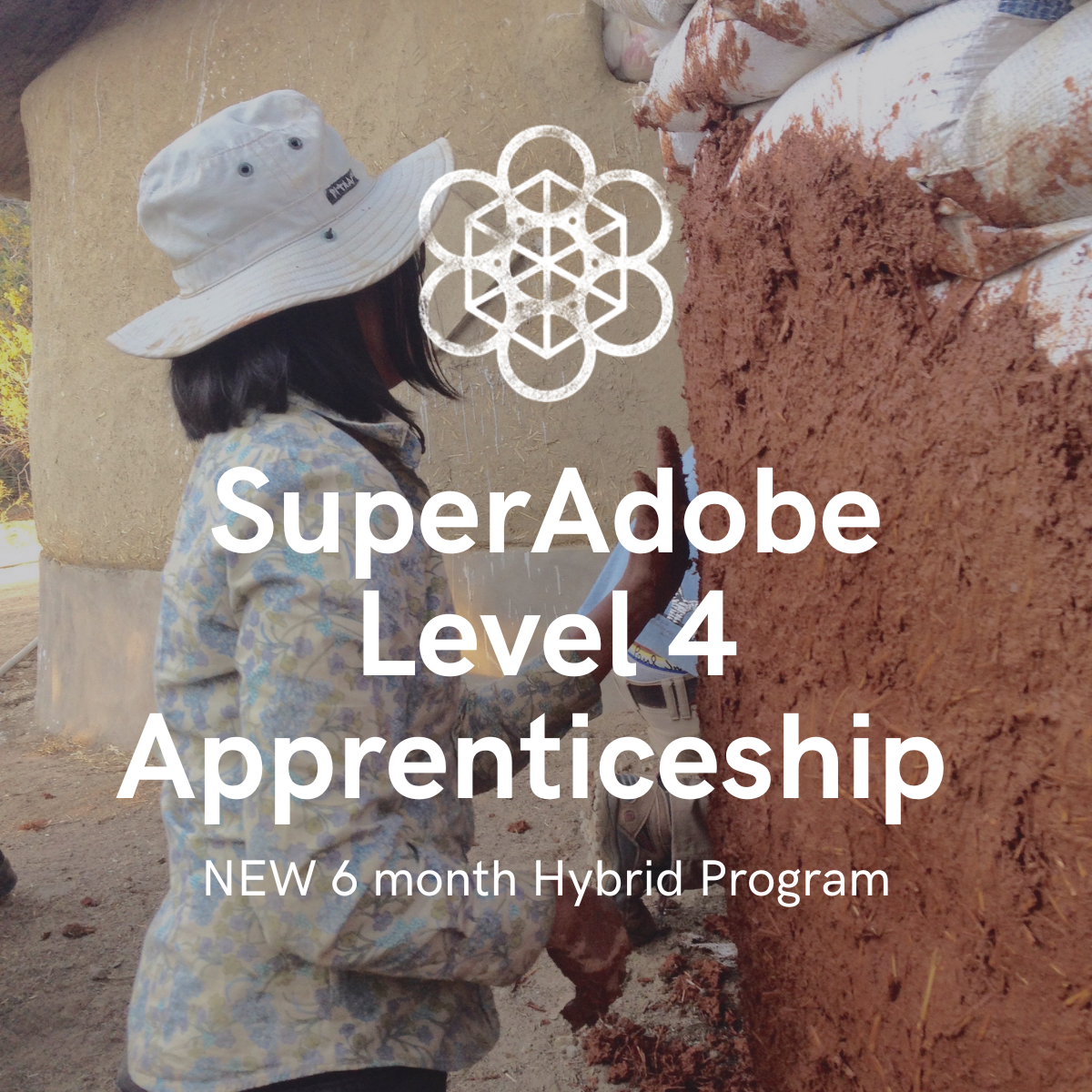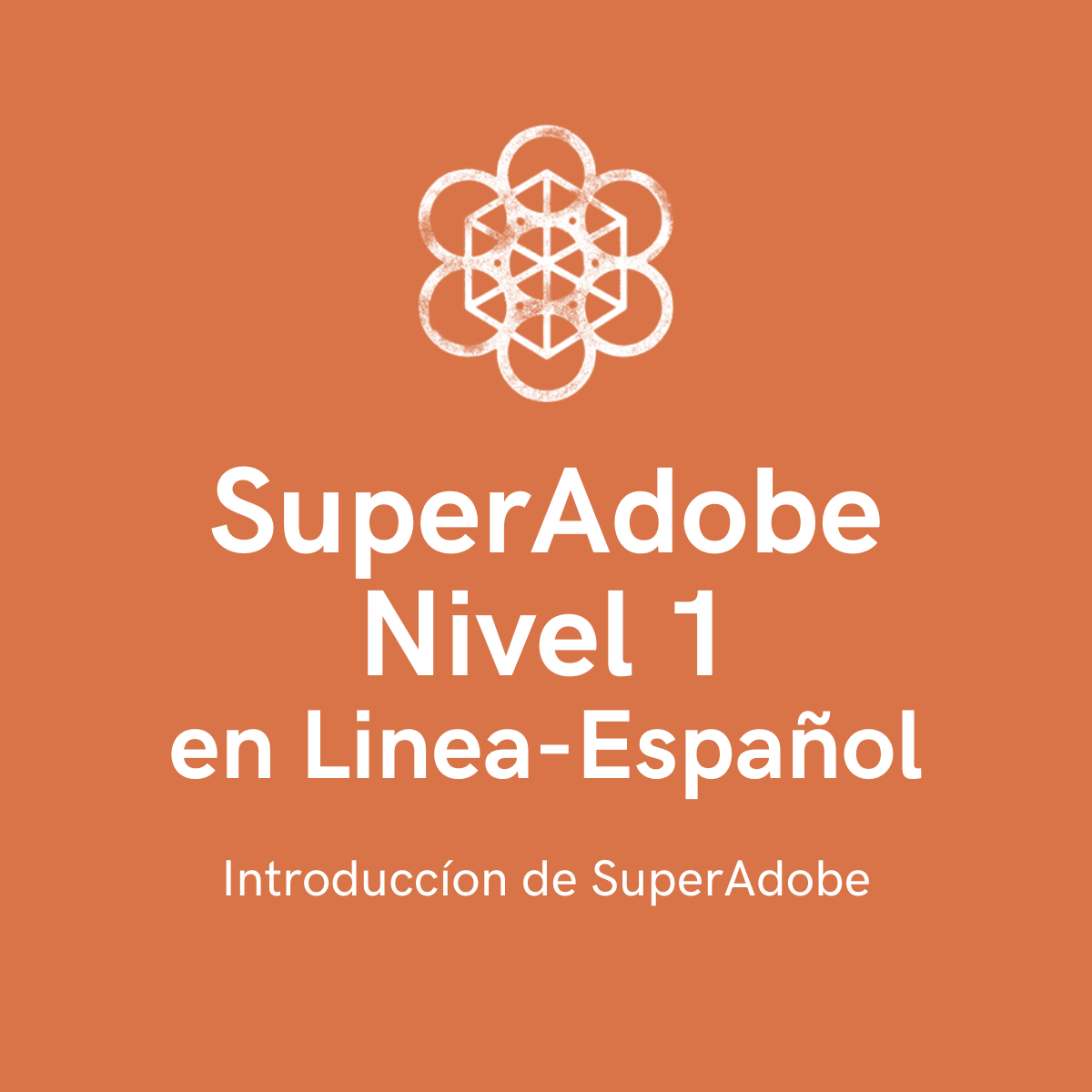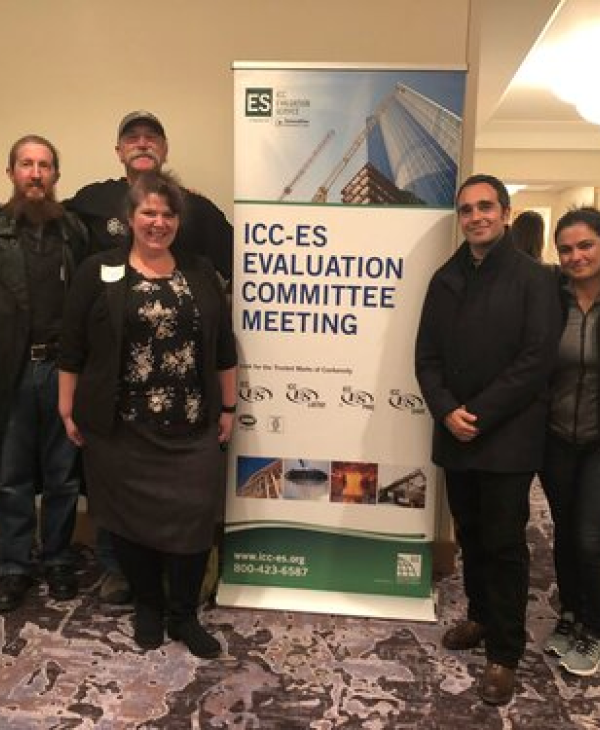After participating in an apprenticeship program at CalEarth, Davide was excited to take his new-found SuperAdobe knowledge back to Italy. Learn about Davide’s domes and also his affinity for using this building technology for garden beds, walls and more!
How did you become involved with the SuperAdobe building technique? During my MSc course in Architecture, Energy and Sustainability I was searching for a good topic for my thesis. I realized how the technologies and strategy involved in the “mainstream” sustainability, in the field of architecture, were not affordable for everybody, more over I realized how some materials could be considered sustainable from some points of view, but not from other points of view. For example, a good insulator can provide a benefit to the energy consumption of a house, but the same insulator might have a very high embodied energy/environmental impact and could create problems at the moment of disposal. While I was pondering these issues, I went to the library and got somehow attracted to a book by Christopher Day “Places of Soul.” In this book, I found out that it is possible to build with earth and I also found the answer to my questions. I chose earth architecture as a subject for my thesis. Through my research, I found out about the work of Nader Khalili and I decided to join the apprenticeship course at CalEarth.

Describe your time studying at CalEarth. How did you find the teaching style and would you recommend this experience to others? My time at CalEarth was very inspiring and what I do now very much derives from that experience. At CalEarth you don’t learn only technical stuff about SuperAdobe; it was an integral teaching for me because it was a place where we could talk about many topics around sustainability and self sufficiency. I experienced it as a “pocket” where I could have the space, the time and the people where I could learn while at the same time look for solutions. SuperAdobe training is very hands-on and we learn by doing and by experimenting. At the end of my apprenticeship, I was physically tired but super fit and ready to carry this knowledge with me back to Italy. I would definitely recommend this experience.
Tell us about your first SuperAdobe project. What structure did you build and what did you use it for? My first project, outside of the institute, was a pouch (half dome) built at a music festival in Italy. I was with another apprentice and another person that followed a week workshop; all of us wanted so much to build a dome with SuperAdobe for the first time in Italy. That dome was a demonstration, a performance (we built it during the festival) but most of all a manifesto because I carried with me only luggage with some single bags, a small roll of barbed wire and a chain, my friend had a knife...that’s it. We didn’t have anything else apart from a shovel that someone lent us. We managed to build a tamper and a half dome in 3 days.

You built a partially underground dome in Abruzzo, Italy. Why did you choose to build underground and what additional steps did you have to take to build underground vs. if you had built above ground? Well the underground dome was not my idea actually; I organized a workshop in Abruzzo and when I arrived there 2 days before the workshop I found a huge hole in the ground. The host of the workshop, who was the owner of the land, told me that he changed his mind and actually he preferred an underground dome. I didn’t have the time to set a new place so I had to deal with it and so we built a partially undeground dome. I was lucky that the ground on which I built was allowing the water to drain very easily and that the dome was built on the side of a hill. Nevertheless, I had to build a trench to divert the water which meant a lot of digging. The key is to think how water “thinks,” allow the water to drain away (and this it is not always possible) and protect the bags well underground from water and also from water vapor. It is a bit risky to build underground because if something goes wrong, it is really difficult to fix the problem or to do some maintenance. I would recommend this more for a hot and dry climate.
In addition to domes, you have also built other structures such as benches, garden beds and walls. Why do you choose to use SuperAdobe for these projects instead of building with bricks or other type of material? I always liked to experiment and research, it is part of my nature, so I must admit that one of the reasons I chose to build these landscape elements with SuperAdobe was to check how they would cope with the climate in which I live. Another reason is because SuperAdobe helps me to generate fluent and organic shapes, and also I wanted to prove to myself that I could build those elements without purchasing ready-made bricks.
The earth spiral you built in a public park encompasses both form and function. What was your inspiration for the project? I am not sure what the inspiration was, it just came somehow. I was definitely inspired by organic shapes, spirals, Fibonacci and so on. First I modeled the spiral with clay (I made a model) as I thought it would just be a bench. Then I thought it would be useful to have a table also but I didn’t like the idea of having 2 circles, and then when I had the model in front of me I realized that it was enough to change the level of the inside part of the spiral to create a table without interrupting the spiral. Yes, it was a kind of “Eureka!” moment.

You travel the globe hosting SuperAdobe workshops. How do you choose where to host? Most of the time it is not me that looks for a host but rather people who contact me because they want to host a workshop. I make sure they understand what it takes to host a workshop, if they have the requirements, I go to meet them, if it is possible, and if I feel we can trust each other, we collaborate and organize a workshop there.
Tell us about a future project. Do you allow volunteers to help or will you hire builders to complete the structure? At the moment, I am discussing the possibility of flying this summer to Indonesia to help some locals that have lost their house during the last tsunami. Then I will lead two workshops in Italy this year and I hope to build a dome with a group of women for a center that supports women that suffered violence.
I do work sometimes with volunteers and if the budget of the project allows, I also like to hire some help.
If you could describe the SuperAdobe buildings you have created in one word, what would it be? I think at the moment I would describe my work as “proudly non-mainstream.”





